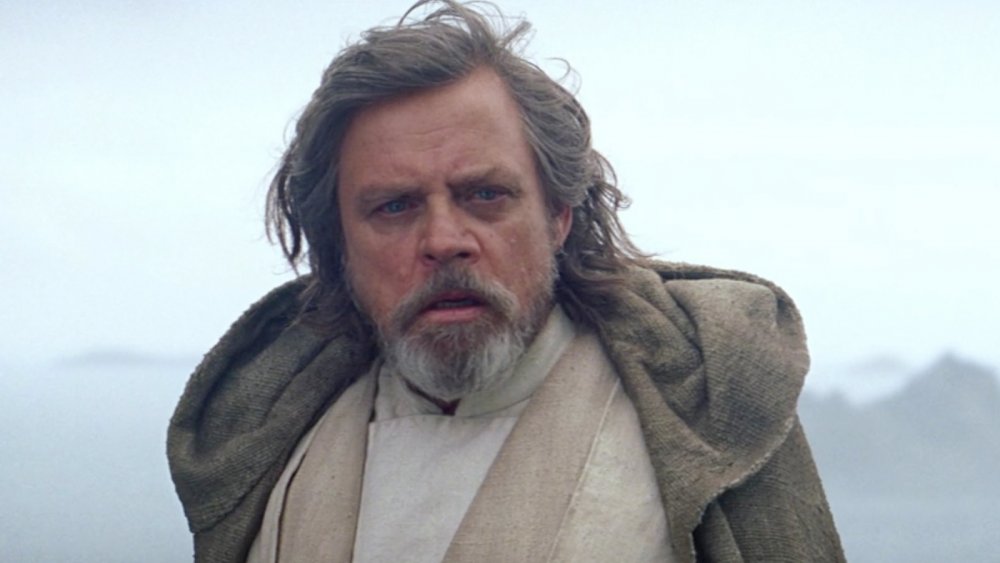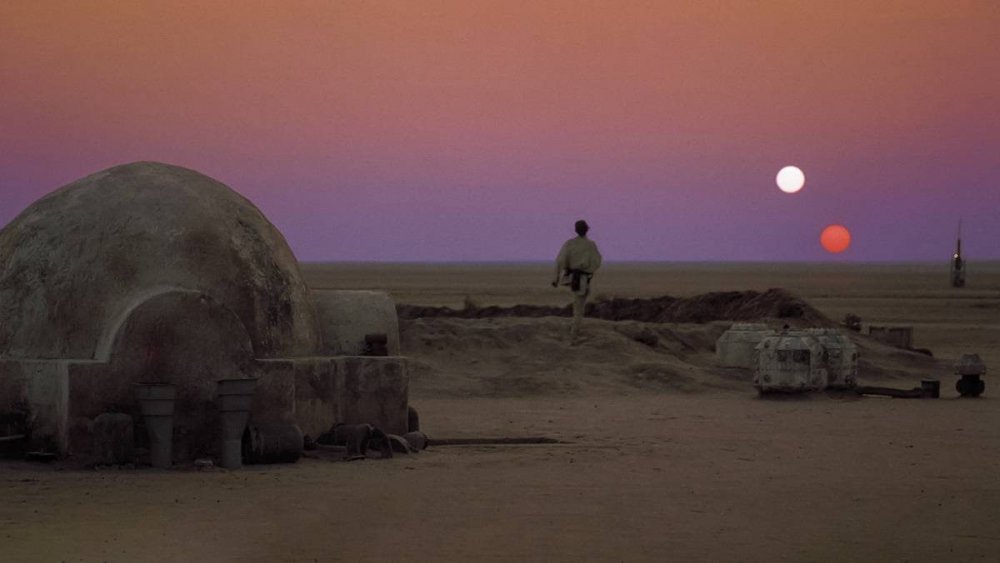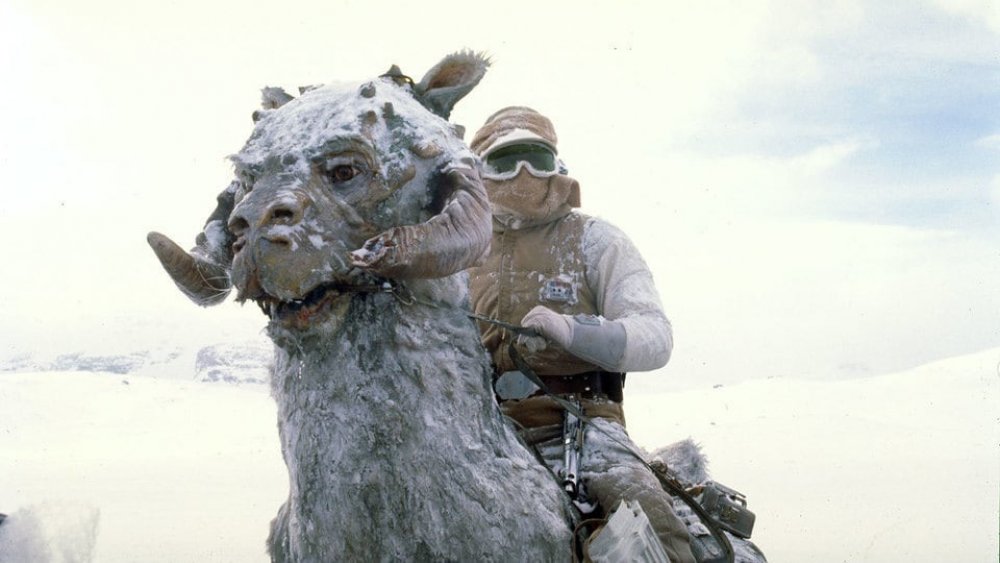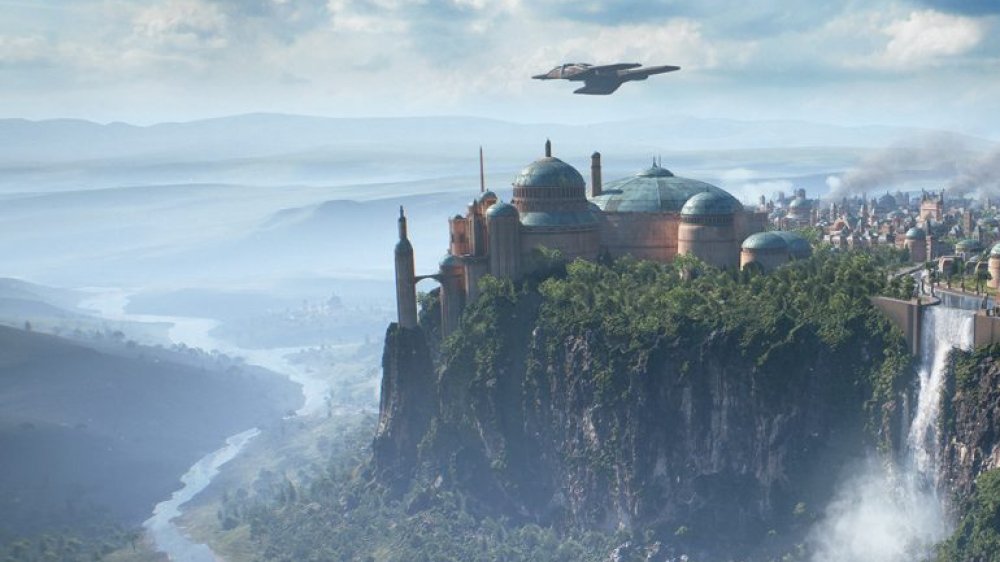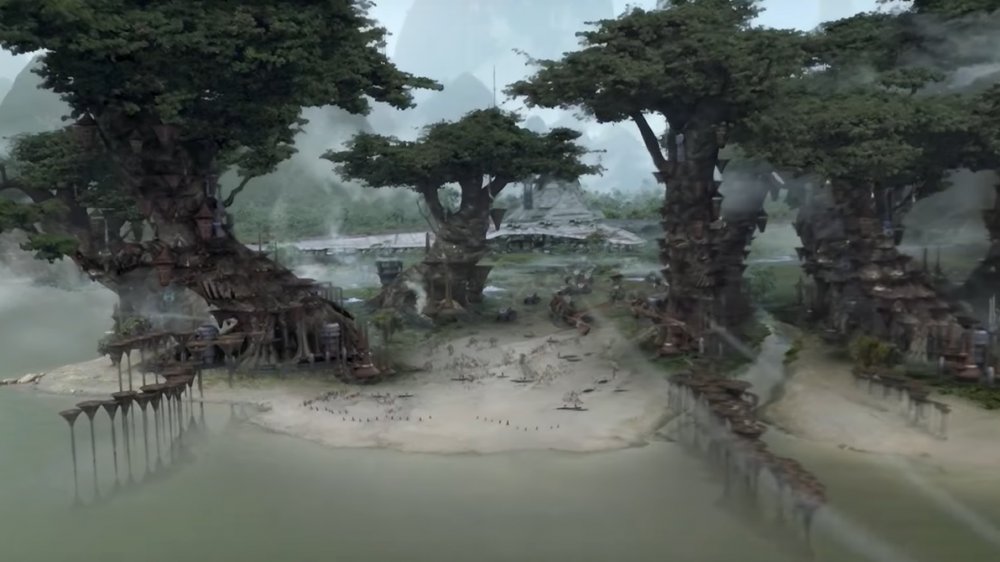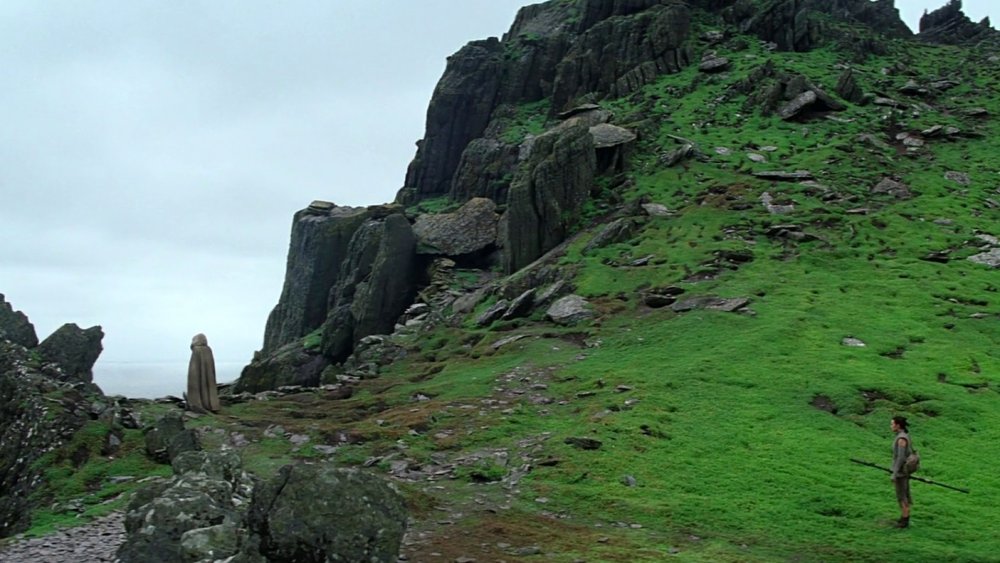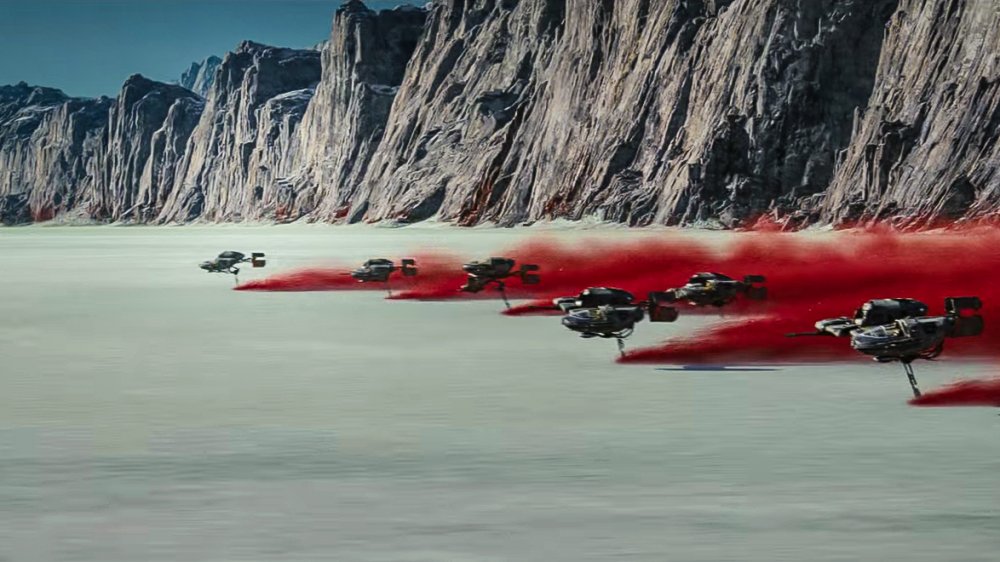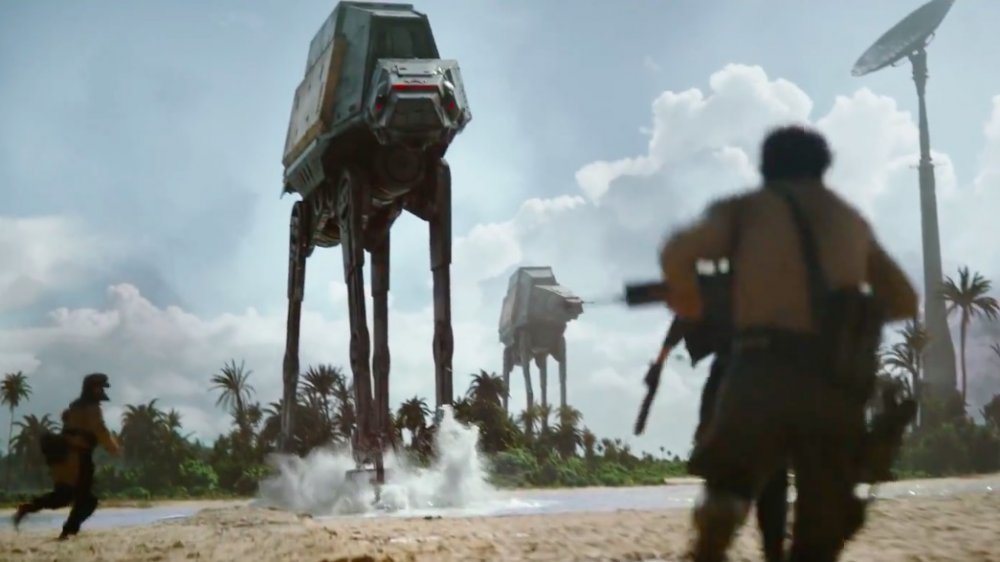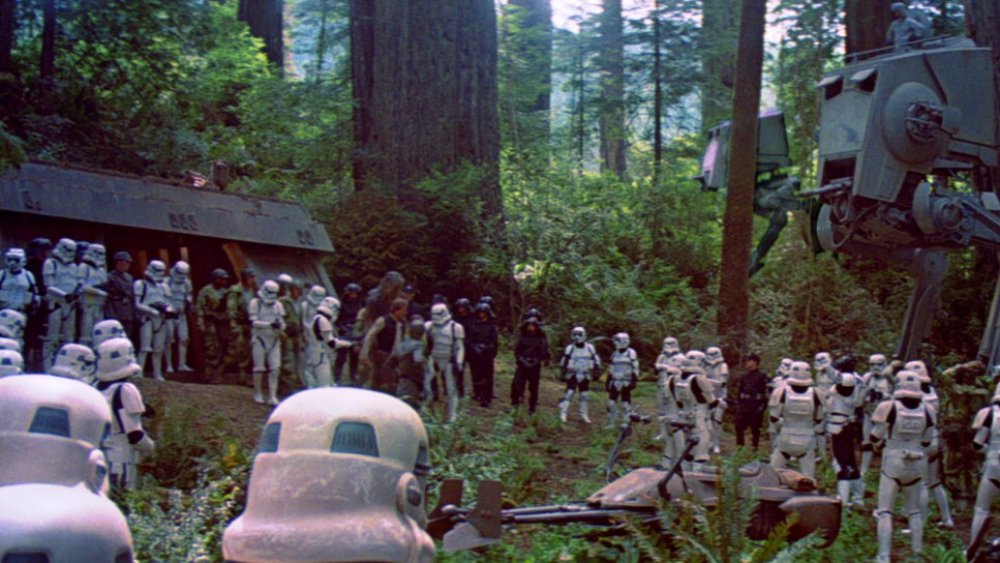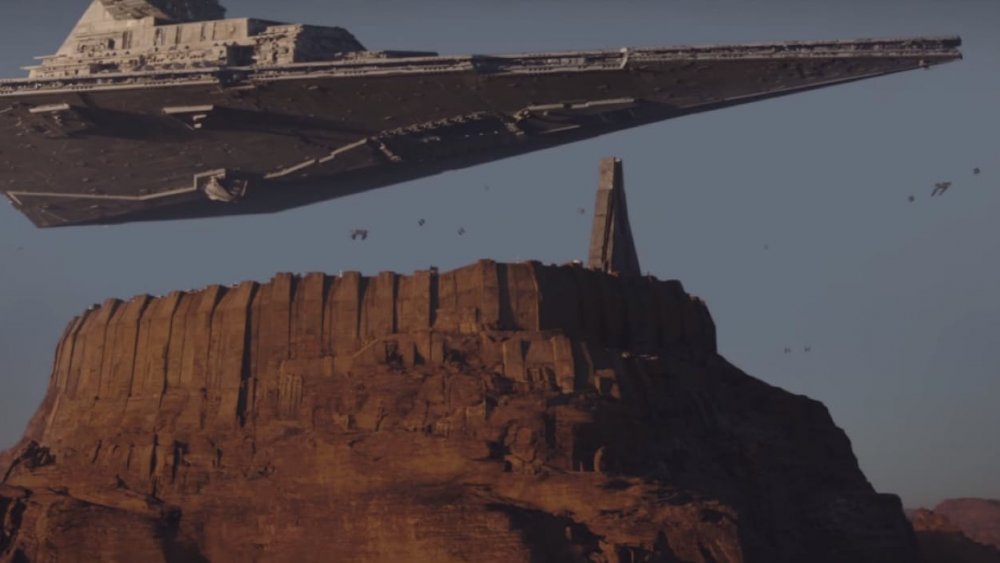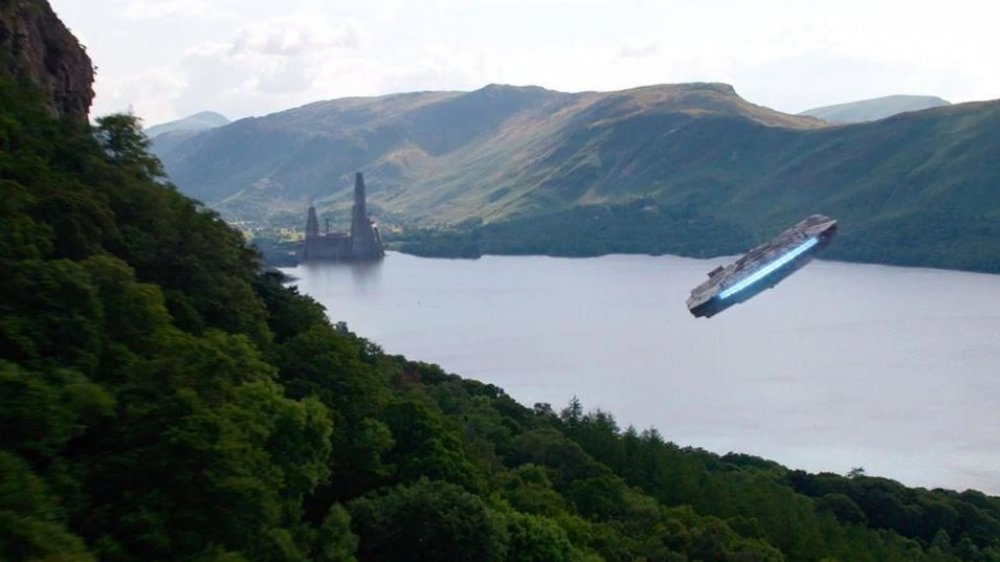Star Wars Locations You Can Visit In Real Life
Ever since 1977, the Star Wars franchise has been taking fans to planets that are far, far away. And thanks to filmmakers like George Lucas, J.J. Abrams, and Rian Johnson, we've been able to experience some truly fantastical environments and far-out worlds, from vast deserts and eerie swamps to icy tundras and majestic forests. However, believe it or not, all those cities and temples up on the big screen aren't just CGI. Sure, some Star Wars planets are the products of computers (we're looking at you, Mustafar), but there are quite a few sci-fi settings that actually exist right here on good old planet Earth. So if you've ever wanted to visit the galaxy that Rey, Luke, Yoda, and Darth Vader call home, well, don't worry, because there are plenty of Star Wars locations that you can visit in real life. And better still, you don't even need an X-wing or a Corellian freighter to visit these places.
Tatooine isn't far, far away
Beyond the nine that inhabit our spiral arm of the Milky Way, there's arguably no planet more well-known than the barren desert world from which Star Wars adventures have begun and returned to time and again. Tatooine, a roughly Earth-sized planet with a population similar to Montana, was created as the ultimate middle-of-nowhere. Lawless, poor, politically insignificant, and presumably devoid of any outlets for teen angst (a Darth Mall in Mos Espa would've made a killing), Tatooine is essentially Kansas 20 years after climate collapse. But while canonically the desert world is 43,000-light-years from the galaxy's core, in reality, it's just a short flight from Europe in the small North African country of Tunisia.
While Star Wars has grown to be a cultural juggernaut worthy of an entire section of Disney Land, when 20th Century Fox first green-lit the story in 1973, no one involved was certain it would ever even leave the launch pad. Consequently, the lower budget made Tunisia an attractive option for Tatooine, but it was the unusual architecture on the Tunisian island of Djerba that ultimately won the filmmakers over.
Intergalactic travelers looking for the authentic Outer Rim experience will be delighted to learn that many of Tatooine's sets are intact and within short reach of each other. You can find Mos Eisley cantina and Ben Kenobi's home on Djerba Island. And if you're into the prequels, you can find Mos Espa in the west of the country, near the town of Tozeur, where the Star Wars crew left the set to be absorbed by the desert. Other locations are scattered throughout the country, but no trip would be complete without a stay in the "Star Wars Hotel," which was used as the Lars family home.
Hoth is hidden in Norway
Hoth is arguably one of the most iconic locations in a galaxy full of iconic locations thanks to the ice planet's only indigenous creatures: tauntauns and wampas. Oh, and the epic battle complete with AT-ATs is pretty memorable, too. The planet itself is more or less barren and fairly remote, making it the perfect place for the Rebel Alliance to set up shop in The Empire Strikes Back. To achieve the remote look and feel needed, the crew filmed the frozen tundra of Hoth in Norway, at a place with the awesome name of Hardangerjøkulen.
Located just south of the town of Finse, Hardangerjøkulen is actually a glacier that provided the perfect snowy landscape to capture the epic battle scene that takes when the Rebels are discovered, but at such high elevations, it meant the crew were filming in subzero temperatures for long periods of time. To help cope with the cold (and the cost of constructing a giant battle scene), much of the action was filmed on miniature sets in controlled locations using baking soda to recreate the terrain. Of course, while the miniatures might be hard to find, you can get a glimpse of the real-life Hoth via railway.
Naboo is one of the most beautiful places in Star Wars
While the Star Wars prequel trilogy is a source of great division among fans of the franchise, it's doubtful that anyone, regardless of how much their blood boils at the mention of Jar Jar Binks, would balk at a chance to walk among the lush foliage and elegant architecture of Naboo. Home to a number of prominent Star Wars characters, including Padmé Amidala and Sheev Palpatine, Naboo featured prominently in The Phantom Menace, and it remained an important location for much of the prequel plot-line. And fortunately, many of the planet's most beautiful settings are completely CG-free and open to anyone willing to making the pilgrimage.
And who, in plotting their own Star Wars adventure, would skip out on a palace tour in Spain or Italy? Constructed in the 18th century, the Royal Palace of Caserta (aka Reggia di Caserta) was once home to Charles III of Spain, and from 1999 to 2005, it served as home to Naboo's royalty. Among the largest estates in the world, the palace is more than 2.5 million square feet and features a massive baroque garden. At the Italian-Swiss border, overlooking Lake Como, the much smaller but no less stunning Villa del Balbianello might look familiar as the site of Anakin and Padme's retreat and secret wedding in Episode II. The lake setting, which has attracted artists and poets for centuries and is easily one of the most beautiful locations in the entire series, is completely real and visible from numerous vantage points in and around the mansion. To round out the trip, adventurers should head to Seville where the 1922-built Plaza de España stood in for the Naboo capital of Theed in Attack of the Clones.
You can visit Kashyyyk in Asia
Among all of the characters in Star Wars, Chewbacca is one of the most beloved and recognizable. The only true alien character among the film series' central cast, Chewbacca's origin was long shrouded in mystery. Solo: A Star Wars Story illuminated much of that mystery by introducing the moment where Han Solo and Chewie first met, but before that, fans were treated to a less-than-cordial visit to the Wookiee's homeworld of Kashyyyk in Star Wars Episode III: Revenge of the Sith, where the tropical planet hosted the Battle of Kashyyyk as part of the Clone Wars. As with most of the prequel series' locations, most of Kashyyyk was computer generated, but in an effort to maintain some level of realism, many of the backgrounds were shot on location in South Asia at both Phang Nga Bay in Thailand and the Chinese city of Guilin.
A lack of physical sets might make skipping either location tempting, but while Phuket and Guilin might be devoid of furry extraterrestrials or their treehouse architecture, the lush subtropical forests are definitely among the most Kashyyyk-like settings on earth, with Phuket being one of the most traveler-accessible and a favorite among explorers of all kinds. Guilin, as with China as a whole, takes a bit more preparation to get to, but in addition to its Star Wars connection, it's frequently rated as one of the most tourist friendly and beautiful cities in China, especially thanks to its dramatic limestone hills.
Ahch-To is a real-life island
When it comes to the greatest cliffhangers in Star Wars history, the final sequence of The Force Awakens ranks pretty high. Rey, having recently defeated Kylo Ren in a lightsaber duel, travels to the far-flung ocean world of Ahch-To in search of a self-exiled Luke Skywalker, holed up in the ruins of an ancient Jedi temple. Owing much to the power of the scene is the truly majestic shooting location, Skellig Michael, an actual ancient religious site off the coast of Ireland. Used by early Christian monks from at least 1044 until the early 13th century, the island features a small stone village reached by ascending a treacherous staircase carved into the island's nearly vertical sides, perfect for the solitude demanded by monastic orders and Jedi masters in self-imposed exile.
In parallel to the real location, the less charmingly named Temple Island is the location where the first Jedi Order was founded and the location of the first Jedi temple. The area is mostly uninhabited, with the Lanai being its only intelligent species. Also, similar to the real island, Temple Island is home to a local species of birds that became the must-have holiday present the year the The Last Jedi was released. Reaching Skellig Michael is tricky due to its status as a protected site due to the ruins and local wildlife, but tours are granted to a handful of visitors each day who can set sail from the small fishing village of Portmagee.
Crait is a stunning Star Wars location
Star Wars has had a long time to develop and grow, and in that time, it's become a full-fledged universe with well over 100 named worlds. Bearing this in mind, it's understandable that not every location is going to stick out in the minds of even the most dedicated followers, especially when planets like Felucia (a psychedelic jungle planet where one of the Jedi is assassinated in Episode III) are only ever briefly visited in the main series and whose names only appear in supplemental texts. But as any traveler, terrestrial or galactic, will tell you, obscure locations are often the best to visit.
Crait is not likely to ring a whole lot of bells, but it's unquestionably one of the most stunning locations visited in the entire series. While more immersed fans might recognize Crait as an important Rebel outpost in the days of the Galactic Civil War, critical to Leia's eventual involvement in the Resistance, most are more likely to remember it as the site for the epic final battle in Star Wars: The Last Jedi. Geography nerds, on the other hand, will probably recognize Crait's real name: Salar de Uyuni. It's the world's largest salt flat and one of the most mesmerizing natural environments on Earth. Like many of the Star Wars shooting locations, Salar de Uyuni requires a bit of a commitment to reach, and the largely untouched environment doesn't offer much in the way of traditional tourism, but the relative remoteness and isolation only adds to the feeling of being on a far away world.
You can totally visit Scarif
While science fiction is full of artists and writers taking their creativity to the extreme — inventing worlds that defy all convention and logic — sometimes it's just as fun to take a simple Earthly environment and turn things up to 11. That's exactly what Gareth Edwards and his production team did while concocting worlds for Rogue One: A Star Wars Story, by building Scarif, the ultimate paradise planet, for the setting of the film's finale.
In order to find the perfect location, the Rogue One team chose Gan and Baresdhoo, two islands in the Maldives, an island chain south of India. Here, epic space battles, acts of heroic espionage, and secret underground bases seemed galaxies away, with most of the Imperial infrastructure of Scarif having been added in post. In fact, Gan and Baresdhoo don't really have much in the way of excitement to offer. Yet, while your stay probably won't mean much to the Rebel Alliance and their efforts to thwart the galaxy, it's probably one of the best places in any galaxy to sit on the beach and watch the world go by.
Those looking for a more fast-paced Scarif will find a fragment of it at the bustling Canary Wharf business district of central London. Here, at the London Underground station, the Rogue One team recreated the interior of Citadel Tower, part of Scarif's Imperial complex and the single most imposing structure on the planet. Though one likely won't find Death Star plans within the station, it does conveniently connect to many other central London destinations.
Endor is actually a national park
From the very first Star Wars film, most of the universe's exotic worlds have been shot on-location in legitimately far-flung environments. For Endor, however — a world not entirely unlike an older, greener Earth, unspoiled by human hands — location scouts looked no further than the Redwood National and State Parks in northern California. Here, far from California's seemingly countless urban centers, lie some of the oldest forests on the planet, home to an ancient tree species that's by far the tallest on earth. There's a truly otherworldly quality to the coastal redwoods, and walking among them, it's easy to understand why this magical world made it into the Star Wars canon.
In Return of the Jedi, the forest moon of Endor orbits a gas giant of the same name. Largely undisturbed for much of its history, the moon rose to prominence when its system was chosen to host construction for the second Death Star, making the moon an ideal location to house the battle station's shield generator. Following the collapse of the Empire, the moon was left to once again exist in peace, without interference from outsiders. As for the real-world forest, it's protected by the state of California and the Department of the Interior so that its endangered flora and fauna might survive into the future. However, if you visit, chances are good you probably won't spot any Ewoks.
Jedha is a barren yet beautiful Star Wars site
For a universe teeming with such a wide array of sentient life, enough to constitute the need for governance on a literal galactic scale, Star Wars has a certain proclivity towards desolate worlds, especially those of the dry and sandy variety. And in 2016, audiences were introduced to another barren place — the drought-stricken moon of Jedha. A place with a strong connection the Jedi, Jedha is a primary source for kyber crystals (mineral growths used in lightsabers) and closely mirrors Earth localities such as Mecca and Jerusalem. After all, the entirety of Jedha is one big pilgrimate site, not only for followers of the ancient Jedi religion, but for others that observe some awareness of the Force.
For Rogue One fans looking to make their own Jedha pilgrimage, the aptly named "Valley of the Moon," or Wadi Rum, in Jordan is where much of the footage of Jedha was shot. A popular tourist destination for nature enthusiasts and adventure seekers, Wadi Rum is the largest wadi (translating most closely to "valley") in all of Jordan. As a two-for-one bonus, the area was also used to shoot Pasaana, a planet created for Star Wars: The Rise of Skywalker.
Visit England, and you'll find Takodana
If Switzerland were a planet, it might be Takodana. Somewhere between the bustling, populated Inner Rim planets and the more wild and rugged Outer Rim planets, travelers often view Takodana as a sort of gateway between them. For thousands of years, a chief feature of the planet was Takodana Castle, an ancient and impressive structure belonging to Maz Kanata. Famous for its neutrality towards all things, including legal and political divisions, Maz's home served as a way station and pub for any and all travelers, so long as they followed her rules — a ban on violence of any kind being the single most important rule.
While Maz's castle never actually existed in the real world (just as well given that it was blown up by the First Order), the picturesque environment in which it was placed is both real and completely explorable for those willing to venture to northern England. In the county of Cumbria, explorers will find the site used for the grounds of Takodana castle at Derwentwater in Lake District National Park. Takodana continues in the nearby Thirlmere reservoir, which was used for footage of ships landing on the planet.
However, the true gem of Takodana, the spooky old forest where Rey tries to escape the battle, is on the opposite side of the island in the ancient forest of Puzzlewood. Thought to have inspired locations in J.R.R. Tolkien's Lord of the Rings, Puzzlewood is likely one of the oldest forests in England. True to its usage in the film, the area is full of ethereal groves of trees and old stone structures, and true to its name, the area is known for being tricky to navigate.
